| Umělec 2005/2 >> WHAT IS TO BE DONE?DO IT YOURSELF! Olga Vasinkevich interviews Dmitry Vilensky | Просмотр всех номеров | ||||||||||||
|
|||||||||||||
WHAT IS TO BE DONE?DO IT YOURSELF! Olga Vasinkevich interviews Dmitry VilenskyUmělec 2005/201.02.2005 Olga Vašinkevič | interview | en cs de |
|||||||||||||
|
Dmitry Vilensky became famous in St. Petersburg in the early 1990s due to his creative activities and organization of photo exhibitions associated with the beginnings of St. Petersburg photography as an independent artistic trend. In 1995, he established a PHOTOpostscriptum, a union in cooperation with other Petersburg photographers, who together organized a lot of exhibitions to feature Russian and foreign photographers. In 1997, Dmitry departed for Germany, where he joined the left intellectual circles. He initiated an exhibition program at the Palais Jalta (Ost/Westeuropaisches Kultur-und Studienzentrum, Frankfurt-am-Main), which reflected the situation in Eastern European countries after the collapse of the Soviet Union, and organized a series of exhibitions featuring photographers coming from those countries. Later, working as an organizer at the Manifesta IV Festival, he gained invaluable experience with the creation and perception of contemporary art "from the inside." Having absorbed the ideas of the European new left, Vilensky returned to Russia with clear convictions about the role and purpose of art as a form of social action.
Throughout those years, Dmitry also continued to actively devote himself to art as he represented Russia at the most prestigious international exhibitions and collaborated with the most progressive international institutions such as the Rooseum Center for Contemporary Art in Malmö and the Next 5 Minutes art festival in Amsterdam. - You came to Germany in 1997. What were your thoughts and ideas during that period and what was the level of your artistic maturity then? - In 1997, I basically concerned myself with photography. By that time, I had become one of the leading Russian photographers and had taken part in various art events throughout the world. At the time, we worked in a very romantic style called photo-archeology. It seems I then managed to reflect the important features of the social reality of the perestroika period. I planned to continue my work as a photographer after leaving for Germany. After half a year, I found a small culture center, Verein – Palais Jalta (Ost/Westeuropaisches Kultur-und Studienzentrum), that was founded by individuals who advocated left-wing views, the participants of anti-capitalist struggles in the 1970s and 80s. That was a very interesting place. It’s board was led by Gerd Koenen, former co-chairperson of the German Communist Party, and friend of Pol Pot, strange as it sounds today. Another person had been associated with the second generation of the RAF (Der Roten Armee Fraktion) and had served a prison sentence for terrorism. In the 90s, they all became normal German intellectuals in the Soviet sense of the word—they left politics and practiced their humanist professions; though they held on to an unbending negative perception of the system, they refused to believe that anything could be changed. Besides, they were united their affection for Eastern Europe. They traveled to Eastern European countries and spoke Czech, Hungarian, and Romanian languages. In the 90s, they were interested in Albania and the Yugoslavian situation. At the same time, there was a small group of people interested in Russia and we easily found a common language with them. I had an idea then to create a new contemporary art program focusing on photography. The interdisciplinary activities of the center generated a very interesting context for exhibitions to be organized among constant political debates, meetings with writers and political activists, gatherings of local ethnic communities, and so on. There was a super and very anti-institutional atmosphere of democratic chaos. As a person coming from Soviet dissident circles, that was a key experience. In the Soviet era, we all were left-liberals, in present-day terminology. Though we preserved ideas of human equality and dignity, we were fascinated with the ideas of freedom and liberation that we could not but associate with market issues. In a society where everything was regulated by the state, freedom was exclusively interpreted as a private practice. Besides, we had no understanding of true capitalism and could not imagine its real danger. Ironically, capitalism is necessary to fight against that kind of capitalism. In Russia in the 1990s, we were confronted more with a chaos, in which any class parameters of society were lost. When I was leaving for Germany, we in Russia did not know "new leftists," — those, who had a historical background of 1968 in the German APO (Ausserparlamentarische Opposition). Gennady Zuganov's communist opposition made us sick and naturally, we could not take it seriously. Outside of the Palais Jalta, I also counted among my acquaintances extreme radicals and leftists—Frankfurt squatters. At that time, they were being threatened with criminal charges for causing an explosion at the Darmstadt prison. I was very interested in them and we soon became close friends. So, my first years in Germany were a very strong incentive to make me rethink many things and, in particular, my creative work. After a couple of years, we began to make rather tough social projects. If everything was going so well, why did you stop your collaboration with Palais Jalta? Before EU expansion, no one would seriously engage with Eastern European art and culture. One needed to find a partner to finance any exhibitions. There are ways to organize exhibitions for galleries with no money: If you invite Austrian artists, you get support from the Kulturkontakt Center; if you invite the Swiss, Pro Helvetia pays all charges; for French artists the French Institute sponsors it. In those circumstances, one could include a few interesting but marginal personalities from Yugoslavia, and such organizations could cover the expenses for their participation. Our maneuvering space was limited because of our Eastern European focus. And I knew nothing about German culture politics at the time, and had to learn a lot by trial and error. I sought to set up exhibitions of dialogue—I’d invite several Eastern European artists along with, say, one from Austria. Coming from Russia, I tried to lobby for Russians but Russia was in disfavor at that time. That lasted for two and a half years. I grew more radical and my projects became sharper and more socially engaged. At Palais Jalta, however, they all lost their energy and sought to make more comfortable and conventional projects. In fact, none of them was concerned with art and their understanding of art was poor. In spite of deep resonance in the media, their only task was to survive. The center was slowly going broke. They decided to transform their exhibition space into a small room, for an office. I was against it; it meant losing the locale required for one’s own premises for project realization. The failure of a project that had been my last hope, became a culmination. I planned a very powerful and serious project Is Russian Art Possible?, which I was preparing together with Boris Groys, a close friend of mine at that time. We involved many well-known people in the art world like Jean Amman and Jurgen Harten. I finally managed to convince Palais Jalta leaders of the importance of the project. The only condition made by Boris was a parallel organization of the first exhibition of his wife Natalia who photographed her family. That had not been a problem before they began to choose photos for the exhibition, that effectively became Boris Groys' Family exhibition. My proposal to somehow augment it with pictures of Petersburg’s Tusovka, for example, Timur (Timur Novikov) or Africa (Sergei Bugaev) was ignored. Just two weeks prior to the exhibition Natalia phoned and said that everything was canceled. As Boris later explained, Natalia thought that I did not show sufficient understanding of her work. He considered relations with his wife more important than any other obligations, and he was basically right. After that failure I could not stay with Palais Jalta any longer. So, Germany was the start for your leftist views on the role and functions of contemporary art based on certain periods of Russian history. Now you are presenting them with the collaborative Chto Delat? (What is to be done?), which you initiated. The group has its own publication – a newspaper of the same name. Was the concept of both the group and newspaper born in Germany? I would not say that I am "back in Russia." Like many other artists, I position myself as a person who does not reside anywhere specific, but is based in several places. We keep our apartment in Berlin, where the same migrants live from time to time, like Avdey Ter-Oganyan and Lena Kovylina. There is always a place to stay for the Radeks or Tolya Osmolovsky. Having achieved a certain level, artists cease to be attached to one place. They have several places and constantly migrate between them. With these migratory circumstances the newspaper and working team were born. For other members of our group – philosophers and writers – every edition is a space to publish unexpected format and context. For me, the newspaper is another dimension of the art project. As a painter and graphic artist I am setting a target to create a space, where these texts would exist in accordance with different laws and enter into collaboration with each other and graphics. The context of life in Berlin and, in general, in the West helped a lot to determine the actual form of the newspaper. Do you think that issues addressed in the newspaper are comprehensible and interesting for foreigners? Or are they exclusively of Russian interest? From the outset we have positioned the newspaper as a micro-community that engages in dialog with the rest of the world. We planned this project based on perspectives including those of the art sphere. This is why the dialog was easy for us. Our fundamental position is avoidance of mentioning who is who in our newspaper. This is a reference to Michel Foucault; today people do not read a text, they read about the position of the author, which was primarily legitimized by the author's name. Our paper in many respects remains an experimental platform. All our issues are absolutely different in composition, but all are united by a connecting-link. By now, I can say that this has proved to be a very serious project demanded by many. We have occupied a very strange niche and now publish the only edition, which comes out simultaneously in Russian and English and is disseminated free, which is of fundamental importance. Every issue is thematic and is in many respects connected with a concrete context. We try to make our issues topical and correspond to the current events we are involved with. However, it is not coverage of this or that event, but a tough critical reflection on the situation. We did not review the Moscow Biennale. Instead, we presented an alternative critique about Russian power from various perspectives, discussing censorship, regional political situations, Ukraine, philosophy in state of emergency, Russia's international involvement, and criticism of neo-conservative tendencies. We were the only ones who attempted to intellectually attack the circumstances in which the Biennale took place. Does the group have contacts with representatives of the leftist movement in Russia and other countries? During the Second European Social Forum in Paris, we distributed a lot of our newspapers. We have contacts with political activists both in Russia and abroad, but I don’t consider these contacts the absolute; we also recognize our own role with cultural production. This position appeared at the peak of social disillusionment. I am not going to publish a populist edition easily understood by the broad masses. Everyone should be responsible on the existing front and, of course, maintain contact other comrades who do their work. So art remains your path. Would that be art in the context of politics or politics in the context of art? This is the old Benjamin's dilemma—rendering politics esthetic and politicizing art… I do not think that is relevant any more. The first issue of our paper was entirely devoted to politicizing art. In Russia, it is not easy for people to understand this. Hearing the word "politics," they picture President Putin or, at best, a big fight among parliamentarians in parliament. After a long period of socialism, politics became aloof from people. In actual fact, all spheres should be interpreted in the light of politics. Most problems have social roots, and a human being is, first of all, a political animal who builds relations with society and power. Today, I am confident that we are in for a period of serious social shock. As our newspaper is somehow preparing for certain changes of circumstances, we do not overlook or pass up potential historic missions. In our latest issue we used Benjamin's definition of a catastrophe as it is very close to us. The catastrophe is a lost chance. We want people to learn how to take risks so that they always open themselves in social experiments and learn not to perceive the world as something unshakable. One of your latest exhibitions that resonated profoundly, Drift Narva Gate, was the first one in contemporary Russian art based on serious multidisciplinary research of the urban situation in the most significant and contradictory district of St. Petersburg, the Narva Gate. Before the revolution, the district was in the outskirts, where workers lived, and the center of revolutionary movement. Besides, this district is filled with monuments belonging to the Constructivist era, which is currently being subjected to multiple efforts to endow it with new meanings. In this district, more than anywhere else, the complexity of social problems associated with the transition from a socialist society to capitalist relations have come to light. Did your research pursue any practical ends such as to exert influence on people who live there? Can art become a catalyst of social change? This is one of the most fundamental questions. Ever since the era of critical realism, artists have been trying hard to answer this. Art has the potential to provoke some changes by attracting public attention to certain spheres. For instance, I hope that our project in Russia will result in the emergence of 200-300 young people who will change their attitude toward Constructivism. Perhaps I am naïve, but I believe that art does have a mission and there is a possibility to exert influence upon something through art. In Russia, however, the political sphere of art is still undeveloped. So, it remains a marginal activity as well as the work of small groups of leftists who do not have the means to influence society either. Our work as artists in this sphere is much more noticeable as it inspires more than an iota of public interest, unlike modest political demonstrations. To be sure, some of them can solve some local problems such as preventing the construction of a new building and, consequently, saving local residents from a reduction of open space. What is the difference between the German and Russian cultural situations? In Germany the situation is more diverse. There are many institutions, a lot of artists and small organizations. Some exchange is permanent. The system reproduces itself. There are several levels of the art world. And there are opportunities to move from the lowest level to the top. Simultaneously, democratic aversion to the establishment is very strong in Berlin. Many artists make art for the sake of art and do not strive for fame. I am for ambitions. I believe that the real formation of history takes place in the sphere of the fight for personal interests and space. Your basic weapon is the word. In your newspaper you always urge something. You stimulate different active and thought processes. In a word, you urge people to act. Are there any projects implemented on the basis of your articles? The word is not our only weapon. For example, the research project Drift Narva Gate was later represented as an exhibition. We implemented several actions for the public. On the 300th Anniversary of St. Petersburg, we went into the streets with signs saying ”We Are Leaving the City.” That was a moment of consolidation of our community. We came to understand that it was not possible to remain within the world of official culture. In the issue of our newspaper entitled Emancipation from/of Labor, there is a description of our public action Sandwiched using a sandwich man. Then, we put on advertisement boards – sandwiches – and gave people empty newspapers with the only page filled with questions about the essence of labor and what labor means in people's lives. Those were provocative questions, which made people reconsider their attitude to labor. Which means that you are provocateurs? I wouldn’t say so. I do not like the word "provocation." It seems to be from a somewhat out-of-date arsenal. Provocation may still function today but it can be easily integrated into mass media with the purpose of tickling people's senses. The resources of ideological and esthetic provocation have been intercepted by mass media and publicity. This is why we should leave the territory under their control and create something personal—something that should not be a passive autonomic zone but expanding centers of pressure that constantly cast doubt on the acting power. For example, I am absolutely sure that in the cultural sector there is a possibility to achieve a critical mass, when today's system of cultural production collapses. Just imagine a serious economic crisis, in which the bourgeoisie stop buying "works of art" and visiting fairs because they have other things to think about… In such a situation most contemporary artists would find themselves out of action. For us, this situation would reveal a lot of unknown and thrilling possibilities for creative work just as it happened in Argentina. Another question is how we would use them.
01.02.2005
Рекомендуемые статьи
|
|||||||||||||
|
04.02.2020 10:17
Letošní 50. ročník Art Basel přilákal celkem 93 000 návštěvníků a sběratelů z 80 zemí světa. 290 prémiových galerií představilo umělecká díla od počátku 20. století až po současnost. Hlavní sektor přehlídky, tradičně v prvním patře výstavního prostoru, představil 232 předních galerií z celého světa nabízející umění nejvyšší kvality. Veletrh ukázal vzestupný trend prodeje prostřednictvím galerií jak soukromým sbírkám, tak i institucím. Kromě hlavního veletrhu stály za návštěvu i ty přidružené: Volta, Liste a Photo Basel, k tomu doprovodné programy a výstavy v místních institucích, které kvalitou daleko přesahují hranice města tj. Kunsthalle Basel, Kunstmuseum, Tinguely muzeum nebo Fondation Beyeler.
|
























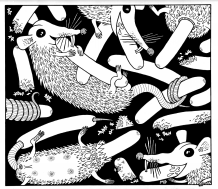




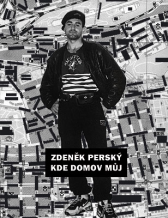
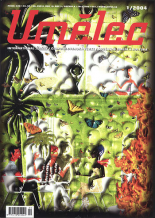
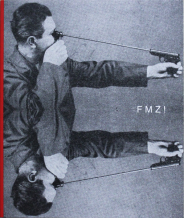
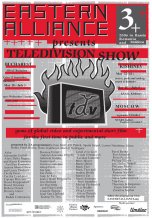


 New book by I.M.Jirous in English at our online bookshop.
New book by I.M.Jirous in English at our online bookshop.
Комментарии
Статья не была прокомментированаДобавить новый комментарий